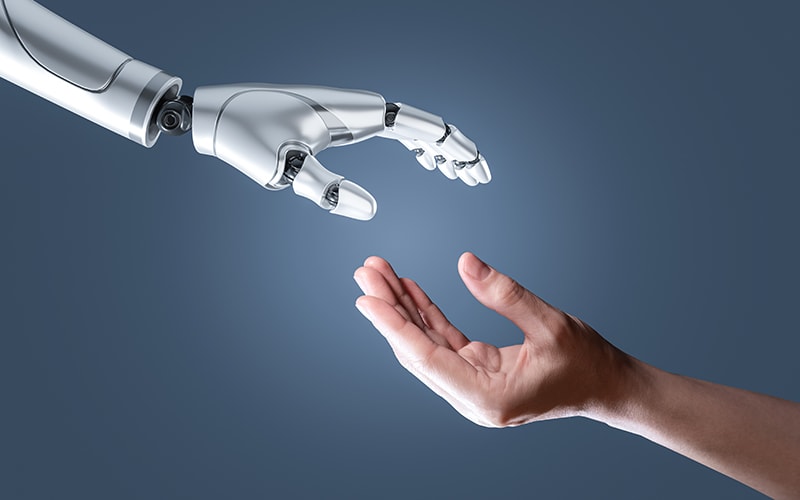Field workforce management is integral to the success and business continuity of the utilities industry. The overarching goal of field workforce management is to ensure that people are in the right place at the right time with the right information. Current practices in the industry are manual, disconnected, and missing customer expectations. Utility companies need to change the way their field workforce is managed and operated.
Today, the back offices of utility companies manually schedule and plan work for the field workforce. As unexpected events like customer care requests or outages occur, back offices rely on manual intervention to shuffle work assignments and schedule to accommodate these jobs. Based on human judgement, these manual interventions often lead to mistakes that negatively impact field productivity and endanger field worker safety. It happens because schedulers are managing field workforces that range in size from hundreds to thousands of workers, with varying skills, located across different geographies and job sites. For example, using factorial growth, if there are 3 jobs and 3 field technicians, there are 6 possible schedules. If you increase jobs and field technicians to 10, there are over 3.5 million possible schedules. Back office schedulers and dispatchers need tools that intelligently optimize field resources before and after unexpected changes. With utility work ranking as one of the most dangerous occupations1, visibility into locations and field working condition is needed to ensure worker safety.
Utility field workers are responsible for maintenance, construction, outage restoration, and customer services. Factors like availability of parts, customer information, asset service histories, and guides are critical for responding to queries and completing work duly. Field workers also need to know when a job has been changed or cancelled before arriving at the site to avoid extraneous travels.
Traditionally, all this information is available through physical paperwork or manual channeling of information from the back office to field workers. Manual processes are prone to human error, decrease productivity, and frustrate customers when the agent lacks complete information. Moreover, manual information processes create bottlenecks. Modern-day mobility solutions fit in the palm of a user’s hand, so chasing paper trails and calling dispatch are legacy practices that need to end.
The way forward
The solution to these problems is digital field workforce management. These solutions are powered by digital technology like artificial intelligence to optimize scheduling, dispatching, and tracking of the field workforce and mobile work management to empower utility workers while on the field.
Artificial intelligence for smoother operations
Artificial intelligence has the ability to take in large amounts of data and derive insights in real time. By taking in live and historic traffic, geographic, and weather data, AI can be utilized to identify the best routes and create smarter schedules. It will reduce travel time, free up field workers to complete more jobs, and minimize the travel expenses of the company.
However, AI’s true potential for field workforce management is in adapting routes and schedules as per changing business requirements.
For instance, a customer may cancel or reschedule their appointment while the designated field worker is out on the road. Instead of leaving white space in the technician’s schedule, the system will find replacement jobs nearby for the technician.
AI enables field workforces to be more productive and satisfy more customers. A leading electrical utility utilizes automatic scheduling and real time location tracking AI for its field operations. Since its implementation, the company has achieved improved field workforce productivity with a 30 percent increase in on-time job completions and real time tracking of field worker progress. This utility firm started its AI journey with one group in the company - the field workforce, to pilot the solution. After the initial success, the company scaled the solution to additional business units to expand the benefits.
Mobile work management
Workers in the field need the right information in the right context without the bottleneck of sifting through paperwork or calling the office. Delays occur when field technicians meet a customer without complete information, which frustrates both parties. With a mobile workforce management solution, utility companies can provide the technicians easy access to all the necessary information. This can be done by integrating customer information systems: asset service histories, parts inventories, invoicing, and much more into one device – a smartphone or a tablet. Such a solution can help enterprises minimize the time spent tracking down the right information. The field workforce will instead be able to focus on completing jobs and satisfying customers. This solution should start at the scale of one integration for one group and be expanded as required. Smart field mobile solutions provide a complete digital experience to the customer through features like:
- Integrated smartphone
- Handheld printer
- Credit card reader
- GPS
- Signature capturing
Apart from being customer centric, mobile work management solutions enhance field crew productivity and safety by allowing automatic timesheet entries, sending SoS messages when in danger, and warning about hard case customers.
Barriers to digital
Utility companies that adopt digital technologies like AI powered scheduling and mobile work management technology are in a better position to realize increased productivity of their field workforce due to less information delay, more completed jobs, and lower field operation costs. To adopt digital solutions, utility companies need to first assess the barriers in their way.
The utilities industry is considered a late adopter of new technologies and practices. It is due to applying the same mindset of designing their IT architecture similar to their physical utility assets. They built their IT landscapes to be stable, secure, and to run for decades. They implemented large-scale software packages for customer relationship managements, outage monitoring, and enterprise reporting.
With changing business requirements, these mammoth landscapes were “Customized with code that was written in outdated languages by developers who have since left,” says Sambit Bisoi, an Infosys Senior Technology Architect who specializes in enterprise mobility and workforce management. To embrace digital technologies, utility companies need to plan and replace these legacy environments as they create a digital roadmap.
Digital technology will present a large transition for utilities because of their approach to IT architecture. The utilities industry not only has aging, legacy systems, but also an aging, legacy workforce. According to the 2017 Center for Energy Workforce Development (CEWD) report ‘Gaps in the Energy Workforce Pipeline’ survey, 33 percent of the current utility workforce is over the age of 53, while only 19 percent is under the age of 32. The CEWD report goes on to state that roughly 64,000 utility employees need to be replaced in the next 5 years2.
The move toward digital will require reskilling existing employees to use digital tools.
Utility companies need to recognize that they will soon lose employees who understand their legacy IT environments and ways of working in the field.
The retirement of so-called legacy employees is more profound than personnel turnover because it will bring the loss of critical knowledge to the business - knowledge about the legacy systems, software customizations, and best practices in field operations. While some of this knowledge is driven by training manuals, knowledge that has been curated through years of on-the job experience is undocumented or simply ‘word of mouth.’ Utility companies need to begin capturing this information and experience immediately or they will risk it retiring along with the aging workforce.
What’s next?
The road to a digital field workforce will not be easy and the barriers discussed above present real challenges. Utility companies need to assess their current IT environments and identify opportunities to begin small scale digital programs.
A senior workforce management architect advises, “You should not choose a solution based on bonus features like automatic scheduling and reporting alone.” These features do not allow for specific customizations or scale for all company needs.
Digital field workforce solutions cannot be universally applied – they need to be tailored to each enterprise. Utilities need customizable commercial off the-shelf software (COTS). The utilities industry has a number of unique characteristics like strict regulations that other industries do not have. Traditional COTS solutions are designed to support the needs of an industry at large, but not the one off characteristics of utility companies.
A customizable COTS solution will allow utilities to account for their unique needs and characteristics.
Also, as utility leaders evaluate digital field workforce solutions, they must consider how they can start small now and plan for customization and scale in the future.
It is important for utility companies to begin the journey to mobile work management. Right now, utilities need to begin deciding about the tools needed and the devices that will be used. Smartphones and tablets have risen in popularity and availability. Utility companies should explore whether they should supply the device or pursue a Bring Your Own Device (BYOD) approach.
BYOD allows companies to immediately capture their field workforce with the devices they are currently using.
BYOD offsets the cost of both supplying phones and training employees to use them.
Currently, BYOD is the preferred approach for mobility in field service.
Capterra, in a recent study, identified that 77% of the field service professionals they surveyed are already utilizing BYOD3. These professionals came from all industries.
Security is a concern with BYOD approaches because it involves the mixing of both private company data, like customer information, and personal employee information. If companies pursue a BYOD approach, they will need to develop security policies that govern these devices.
The utilities industry provides vital foundational services to the entire population and its impact is more pervasive than its often low-key public profile. It’s up to the industry leaders to make the choices now that will let technology unify, equalize, and empower all stakeholders in the days to come.
References
- Shallenberger, Krysti, “Electric line workers listed among top 10 most dangerous jobs,” utilitydive.com, April 12th, 2016. https://www.utilitydive.com/news/electric-line-workers-listed-among-top-10-most-dangerous-jobs/417262/
- Gaps in the Energy Workforce Pipeline 2017 CEWD Survey Results,” accessed January 26, 2018, ,a http://cewd.org/documents/surveyreport/2017CEWDSurveySummary-FNL.pdf
- Marder, Andrew, ”New Research on BYOD in Field Service,” June 8, 2015, https://www.capterra.com/field-service-management-software/byod-in-field-service





